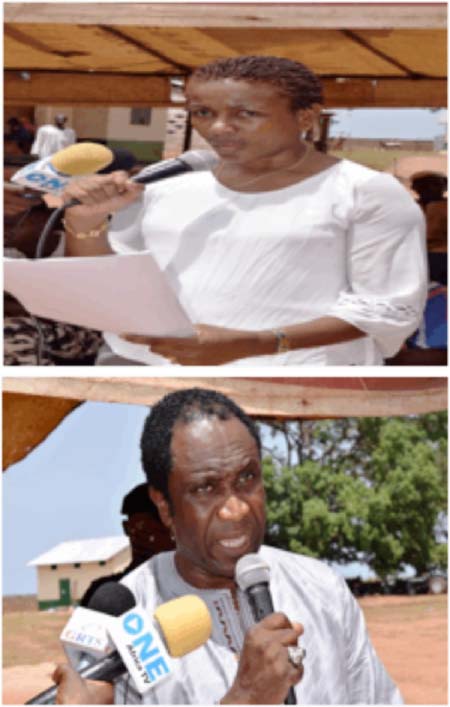
Nessie
Golakai, deputy resident representative of the United Nations Development
Programme (UNDP), has said that a key characteristic of poverty is high
unemployment rate.
She
said the labour force survey report 2012 indicates that 38 per cent of youth
were unemployed compared to the national unemployment rate of 29 per cent.
She
made this remark at the graduation ceremony of 52 youths from Gambia Songhai
Initiative agricultural training centre in Chamen, North Bank Region.
The
Gambia Songhai Initiative is implemented based on the Songhai model, an
innovative institution.
It
is a two-component initiative to develop a functional agricultural system, and
to incubate agro-entrepreneurs and promote services. The ultimate aim is to build a critical mass
of successful young entrepreneurs throughout the country.
Madam
Golakai said poverty and unemployment are the biggest development challenges in
The Gambia and the youth are a disproportionate segment of this segment.
She
noted that youth unemployment and poverty are largely associated with little
opportunities to access quality skills training, livelihood opportunities and
access to credit and other assets.
“Due
to unemployment, most of the youth leave the country through irregular
migration leaving the burden of development in the host communities on the
shoulders of their ageing parents,” she opined, adding that the situation
places a lot of pressure on those left behind, especially the elderly.
The
UNDP official said the formal sector cannot employ all the youth and therefore
strategic choice must be made to absorb the youth in productive engagement.
She
pointed out that a sectoral analysis conducted in The Gambia indicates that
agricultural transformation and modernisation can be a viable part of the
response to the youth unemployment challenges.
“It
is important that the new Gambia delivers on its promises for which youth
employment and diversification of the economy is critical and is a must,” she
stressed.
Henry
Gomez, minister of Youth and Sports, said The Gambia government recognises the
role of young people in the rapid development of the country.
He
said the rapidly rising population of young people in the country poses
development challenges but could also be transformed into an opportunity for
effective contribution to national development.
“Without
the relevant investments in youth to realise their full potentials, young
people can easily be exposed to vices such as forced migration, radicalisation
and violent extremism,” he warned.
The
Gambia has witnessed massive migration of young people from the country to
Europe using perilous routes. Many young
lives have been lost in the process of trying to reach Europe.
“The
Gambia can however reap the benefits of a bulging young population by investing
in youth empowerment programmes,” the youth minister disclosed.
He
added that harnessing the demographic dividend of Gambia’s youthful population
would require effective investments in health, empowerment, education and
employment of youth through public and private sector involvement.
“Investing
in young people living in rural areas is key to enhancing agricultural
productivity and food security, boosting rural economies, and reducing
rural-to-urban migration,” Mr Gomez said.
Young
farmers and producers, he continued, often have greater capacity for innovation
and entrepreneurship than older adults.
“This
capacity may better equip them to address the emerging requirements of
agriculture and the rural non-farm economy,” he said.
“Our
most important resource as a country is our young people. With the right
investments in this resource, we will realise our development aspirations.”
Jude
Nwachukwu, coordinator of the project technical team in Chamen, said Gambia
Songhai Initiative (GSI), in two years of operation, has enrolled 137 people,
47 per cent of which are females and 53 per cent male.
Out
of the 137, 80 trainees graduated and 35 are already in the employ of Food and Agricultural Organisation,
Ministry of Basic and Secondary Education and GSI Chamen.
Another
batch of 40 youths has been recruited and is undergoing training; it is the 4th
batch.

